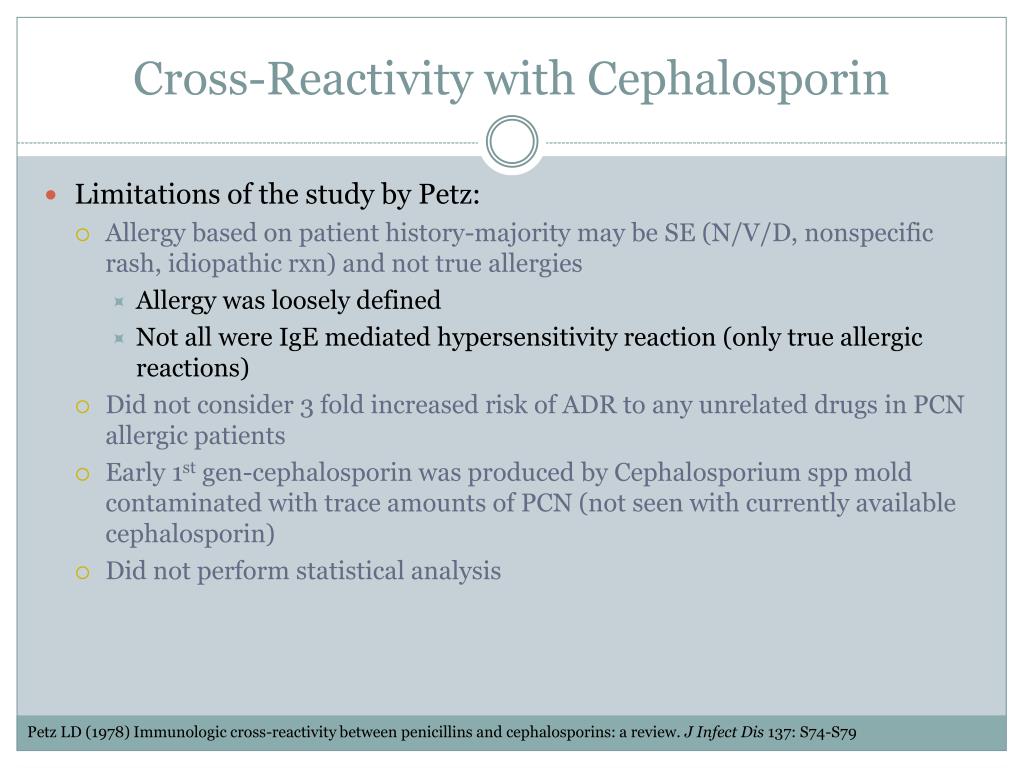

5, 6, 7 In another multi-site, prospective cohort study, beta-lactam allergic patients who received a non-beta-lactam antibiotic as opposed to a beta-lactam antibiotic had significantly more adverse events reported in the form of hospital re-admissions for the same infection, acute kidney injury, C. 4 The use of these second-line antibiotics leads to increased healthcare-associated infections including a 23% increased odds of Clostridium difficile, a 14% increased odds of methicillin-resistant Staphylococcus aureus (MRSA), and a 30% increased odds of vancomycin-resistant Enterococcus (VRE).
Antibiotic allergy cross reactivity chart driver#
3 In orthopaedic surgery, a PAL is the primary driver for choosing an alternative perioperative antibiotic, with clindamycin being utilized most frequently (OR 34.6, 95% CI 29.9–30.1, P<.005). 3 With over 8,000 penicillin-allergic patients reviewed and over half of those patients having orthopaedic conditions, the authors found a 50% increased odds of SSI among patients reporting a penicillin allergy entirely attributable to the use of a beta-lactam alternative antibiotic (primarily clindamycin or vancomycin). A compelling article published in November 2019 correlates the risk of having a PAL with developing surgical site infection (SSI).

1, 2 Having a PAL for a patient undergoing surgical intervention is not benign. 1 With this emerging knowledge, the new term coined to refer to a penicillin allergy that has not yet been evaluated is penicillin allergy label (PAL). Penicillin allergies are reported by 8–15% of the US population, but up to 95% of these allergies do not correspond with a true allergy when tested.


 0 kommentar(er)
0 kommentar(er)
